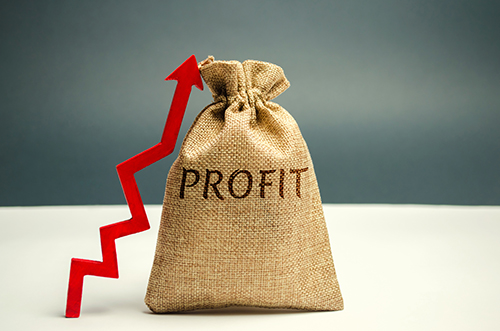
One of the things that all people in business know is that all businesses, short of “not for profit” companies, is that profit is a primary objective. Although I could argue that even “not for profit” companies should be operating in a manner that should produce a profit, but that’s a subject for a different time. That said, showing a profit is the goal if you have any ambition whatsoever of supporting your company’s ongoing interest, and supporting you, the owner, over time. Profit defined is simply, “a financial gain, especially the difference between the amount earned and the amount spent in buying, operating, or producing something.” But over the years and the thousands of business owners that I’ve asked this question, few could tell me how much profit they “should” be making. I would typically hear responses regarding “industry average” and historical realities of their own company. After they’ve given me their thoughts, they would typically ask me, “what should it be?”. And now we circle back…
Let me state that I am NOT a proponent of gouging your customers with excessive pricing for the benefit of showing more profit. Profit at the expense of others using unethical pricing practices is not, in my opinion what a free-market enterprise is about. At the same time, I hear a business owner tell me that he was given advice from his accountant that he shouldn’t show a profit, or too much profit lest he will end up paying more in taxes. I am not in advocate of this practice either. Can you imagine the logic of using some slick accounting practice to minimize profit over several years?! Suddenly the business owner either wants to secure a loan or even sell his business and the business appears to have not been profitable for years. Ooops… now what?
We may have stated this in other blogs or perhaps our Biz-easy Podcast but profit should be planned. It is not a, “wait until years’ end and see what’s left over” proposition. As you understand your cost of goods as a percentage of total revenues, or your gross margin, and have factored your fixed costs or overhead, you understand your breakeven. If your pricing policy is in alignment with these numbers, your planning for profit can then be established. I mentioned earlier that most business owners can usually quote industry averages. I imagine that this is a good place to start. It’s always been my belief that average is simply the best of the worst, or the worst of the best. Does anyone strive to be average?
Your first assumption thereafter is to achieve better than average. But before you start raising prices, there is a multitude of other “variables” in the business to consider.
- Am I purchasing effectively?
- Am I turning my inventory properly?
- Are my labor efficiencies in check?
- Am I minimizing unnecessary overhead costs to the best of my ability?
- Have I done an effective “competitor” price comparison lately?
- Do I have a grasp on what the market will bear at this juncture?
Not to beat a dead horse with the over-use of an expression but, if you treasure it, you should measure it. If you have managed to answer all of these questions with an affirmative, you can then beat the average… the industry profit average that is. There are so many variables within your business that you are tasked with controlling that is seems the easiest way to manage it all is to, “wait until years’ end and see what’s left over.” You don’t have to be an accountant but having the tools and or personnel that work with you to manage the variables becomes essential. Let’s face it, this simple cost can make the difference between managing for profit or waiting ‘till the end.
We keep handy a list of most industries and their respective profit averages. Most of this information can be discovered with a deep dive on the internet but the more you dial down on your business, its specialties, uniqueness, and product/service mix, the more convoluted it becomes. Don’t become discouraged. My humble advice is to figure out, with as much precision as you can, how much profit you have been making in recent months (and years) and prepare yourself a report. From this report you can look at seasonal or fluctuations that occur in your business on a yearly basis. As an example, I was working in the tuxedo business for over 15 years. The tuxedo industry is unique in that it caters to groups and individuals all whose demand occurred in about a 3-month span; weddings and proms. In that day, a vast majority of formal occasions occurred between April and June. Aside from a small demand spike in the fall, 80% of the revenues were generated in only 3 out of 12 months. Pricing policy and cashflow planning were absolutely essential to survive. Labor efficiencies and demand for labor in the busy months were additional challenges.
Not all businesses have the seasonal fluctuations that the tuxedo industry has but the tracking of costs does affect all industries. Knowing your profit history coordinated with your profit expectations will invariably compel you to plan more effectively. That is if profit is something you strive for, and I assume it is. To share another of my most prized expressions, “it’s not how much you make, it’s how much you keep!”
From the Hosts of the Biz Easy Podcast

